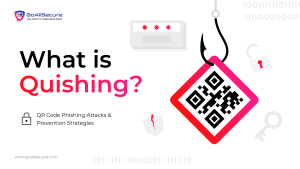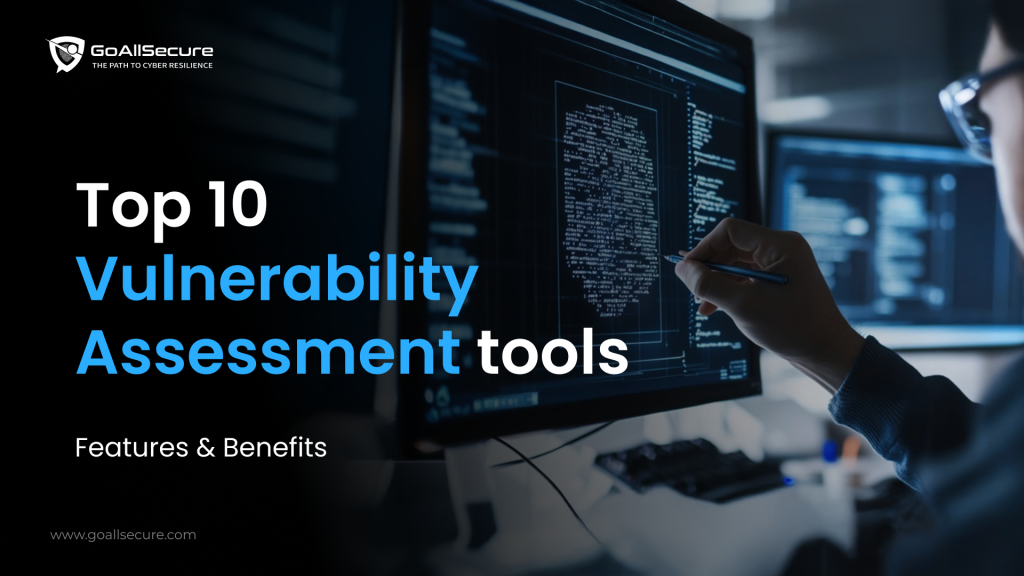Digital security has become exceptionally challenging for organisations due to the vast amount of data they need to protect. The threat comes from skilled cyber-attacks that emerge rapidly in the current evolving digital environment. What is the solution? A comprehensive cybersecurity strategy that starts with a complete vulnerability assessment. Companies need to select the correct tools which will help them discover and eliminate security risks before attackers exploit them. This blog is a guide that evaluates major vulnerability assessment tools by presenting use cases and features, together with specific advantages for organisations. Before we jump into the list of top 10 vulnerability assessment tools, let’s first understand vulnerabilities and vulnerability assessments.
Understanding Vulnerabilities and Vulnerability Assessment
“To err is human”
Quoting the great Alexander Pope, mistakes take place even during the building and coding of technology procedures. Usually referred to as bugs. Although flaws are not intrinsically dangerous, they can be exploited by threat actors—these are called vulnerabilities. One can use vulnerabilities to drive software to behave in ways it is not meant to. Now, how does one protect themselves from these vulnerabilities? The answer is thorough security reviews, vulnerability assessment and penetration testing (VAPT). Combined, they will find, evaluate, and fix vulnerabilities in systems, networks, and applications of your company. VAPT enables you to keep ahead of market trends and uphold compliance with changing security criteria. Let’s look at vulnerabilities and VAPT in detail.
What Are Vulnerabilities?
In cybersecurity, a vulnerability is a hole or weakness in a system that cybercriminals can take advantage of to gain illegal access or cause damage. Usually resulting from coding mistakes or misconfigurations, these weaknesses can be used to undermine security, stop operations, or steal data. Once discovered, these weaknesses are labelled as CVEs (Common Vulnerabilities and Exposures) and evaluated for possible danger. In simpler terms, a vulnerability is a weakness hackers can exploit to gain unauthorised access to a computer system.
Vulnerabilities can be :
- Hardware
- Software
- Network
- Personnel
- Physical Site
- Organisational
What Is Vulnerability Assessment?
Vulnerability assessment is a technique that allows companies to check their systems for possible security flaws. It involves defining, spotting, classifying, and reporting cyber vulnerabilities across endpoints, systems, and workloads. It is the continuous, consistent process that is usually automated.
Vulnerability testing helps businesses find whether their systems and software have active default settings that are insecure. It also looks for any possible escalation of user rights or erroneous authentication systems. It evaluates sensitivity to code injection attacks like Structured Query Language injection (SQLi) and cross-site scripting (XSS). When you combine vulnerability assessments with penetration testing, you get a powerful mechanism to guard your company’s assets. VAPT, i.e., vulnerability assessment and penetration testing, ensures the confidentiality of your data and significantly reduces your risk of breaches.
What Are Vulnerability Assessment Tools?
Vulnerability assessment tools are specialised software meant to find, classify, and rank vulnerabilities in systems, applications, and network infrastructures. They enable a thorough investigation of the possible sites of compromise on a system, guiding the required countermeasures to reduce the risk. These tools help companies to put the necessary security measures in place by revealing the weaknesses a system might have.
Vulnerability assessment tools comb through the system, looking for any possible security flaws. They search the network for obsolete programs, missing fixes, poor setups, and any other potential danger point of view that hackers might find use for. These scans produce results that are then compiled into a thorough report of the system’s weaknesses, which IT experts can then use to rectify the discovered problems.
Types of Vulnerability Assessment Tools
Automated scanning methods form the backbone of modern vulnerability analyses and threat detection. Mentioned below are different types of tools used for vulnerability assessment:
Network Scanners
Potential network security threats are found by employing network-based scanning tools. On wired or wireless networks, this kind of search discovers vulnerable systems.
Host-Based Scanners
Host-based scanning tools are used to find flaws on servers, workstations, or other network hosts. This kind of scan searches for weak open ports and services, offering information on the configuration settings and patch history of examined systems.
Wireless Network Scans
Wireless network scanning tools search a company’s Wi-Fi system to find security flaws. These checks ensure that wireless networks are set up securely and help identify hostile access points.
Web Application Scanners
Web application scanning tools check for known software flaws and misconfigurations, and examine websites and mobile apps.
Database Scanners
Database scans uncover general vulnerabilities and misconfigurations in a database server. These tools also find flaws that can allow SQL and NoSQL injection, therefore enabling database-specific attacks.
Top 10 Vulnerability Assessment Tools and Their Features
This section of the blog will present an extensive overview of the ten most dominant vulnerability assessment tools. These tools can serve modern enterprises like yours in their cyber defence requirements. We have created a list with the varied needs and requirements of tech companies in mind. You can go through the listed tools and find your best fit. We cover fields like experiences, key features, delivered services, client feedback and overall reputation of the service providers. Investigate which vulnerability assessment tools deliver maximum effectiveness at identifying system security flaws for your organisation to analyse and fix. This extensive guide investigates ten leading industry tools and how they fit different vulnerability management approaches between small businesses and enterprise security teams.
1. Nessus: The Industry Standard
The security assessment benchmark is Nessus because it delivers the industry’s most advanced scanning depth to organisations. The advanced scanning engine of this platform discovers security issues in a wide range of IT settings, which include classic network configurations along with cloud-based systems.
Key Features:
- Advanced vulnerability database with over 140,000 plugins for security checks
- Real-time security updates and threat intelligence integration
- Customisable scanning templates for different security needs
- The platform supports multi-environments, including cloud-capable systems and container infrastructure, as well as conventional infrastructure setups.
- It provides automatic compliance checking services for standards that include PCI DSS, HIPAA, and ISO 27001.
Benefits:
- Organisations reduce security threats because the system provides extensive scanning capabilities along with swift detection capabilities.
- The system cuts down processing time because it performs automatic scanning in addition to running automated reports.
- The system reduces erroneous alert detections using its advanced verification systems.
- The system preserves regulatory compliance through its automated record tracking capabilities.
- Supports both technical and non-technical users through intuitive interfaces
2. OpenVAS: Open-Source Excellence
Community-driven security solutions achieve their power through the Open Vulnerability Assessment System (OpenVAS). The tool provides a complete enterprise-level scanning solution free from licensing fees.
Key Features:
- Comprehensive vulnerability testing protocols
- OpenVAS maintains an automated process to distribute the latest definitions of vulnerabilities in its feeds.
- Custom test creation capabilities
- Concurrent scanning of multiple targets
- The platform generates reports in three diverse formats: PDF, HTML and XML.
Benefits:
- The system delivers professional-grade scanning functions with no expenses for licensing
- The ongoing development takes place within the community to deliver swift responses against emerging threats.
- Flexible deployment options for various environments
- Strong integration capabilities with other security tools
- Customisable to specific organisational needs
3. QualysGuard: Cloud-Native Security
The cloud-first strategy in QualysGuard transforms vulnerability management by providing immediate scalability with real-time security observations.
Key Features:
- This solution uses its distributed scanning appliances to provide worldwide scanning capability.
- Asset discovery and inventory management
- Continuous monitoring and assessment
- Built-in compliance reporting tools
- Web application scanning capabilities
Benefits:
- Eliminates hardware maintenance costs
- Provides instant deployment and scalability
- The system delivers permanent security stability to all worldwide infrastructure networks.
- The system decreases information technology expenses by employing self-managing operations.
- Enables real-time security posture visibility
4. Rapid7 Nexpose: Advanced Risk Analytics
Nexpose enhances security operations by providing detailed risk analysis features that guide teams in effectively addressing their most urgent vulnerabilities.
Key Features:
- Real-time threat adaptation
- Risk-based vulnerability prioritisation
- Integration with popular SIEM solutions
- Automated remediation planning
- Custom report creation and scheduling
Benefits:
- Security teams can conduct efficient remediation work on the most severe vulnerabilities through this system.
- The system enhances security team performance by employing an automated workflow.
- The system offers security metrics that enable organisations to monitor their progress effectively.
- Organisation achieves faster remediation because specific actions follow a priority order.
- In addition to this, software stakeholders gain improved insight into security program performance.
5. Acunetix: Web Application Security Specialist
Acunetix delivers specific security scanning abilities which handle current web application vulnerabilities in the security field.
Key Features:
- Single-page application crawling is possible through advanced technological scanning methods
- DeepScan technology for thorough vulnerability detection
- Business logic vulnerability testing
- CI/CD pipeline integration
- Interactive application security testing
Benefits:
- Reduces web application security risks
- The development process becomes quicker when vulnerabilities are detected in an early stage
- The system reduces the number of non-existent security risks that web testing commonly produces
- The system permits security testing to operate continuously when applications follow agile development practices.
- The solution scans for all violations within the OWASP Top 10 vulnerabilities category.
6. Burp Suite
The Penetration Testing community adopts Burp Suite as their preferred tool. Security professionals choose Burp Suite because it brings together automated scanning with manual testing functionality, providing them with their preferred tool.
Key Features:
- Advanced web vulnerability scanning
- Intercepting proxy for manual testing
- Custom security test creation
- Extensible through plugins
- Built-in reporting tools
Benefits:
- The solution allows users to execute both automated and manual test processes.
- Enables deep application security testing
- Supports complex authentication scenarios
- Offers detailed vulnerability analysis
- Facilitates collaborative security testing
7. Nikto: Lightweight Web Server Scanner
The efficient security assessment capability of Nikto operates on small resource needs.
Key Features:
- Comprehensive web server vulnerability checks
- Support for multiple SSL libraries
- Scan logging and report generation
- Plugin architecture for extensibility
- Command-line interface for automation
Benefits:
- Quick initial security assessment capabilities
- Easy integration with security workflows
- Regular updates for new vulnerabilities
- Minimal resource requirements
- Strong community support
8. GFI LanGuard: Network Security Scanner
GFI LanGuard provides organisations with total network security through its advanced vulnerability assessment capability, which merges with automated patch management features.
Key Features:
- Network-wide vulnerability scanning
- Automated patch management
- Asset tracking and management
- Compliance reporting
- Mobile device scanning
Benefits:
- Streamlines security patch deployment
- Improves network visibility
- Ensures compliance
- Reduces manual management tasks
- Provides comprehensive coverage
9. IBM Security QRadar: Enterprise Security Intelligence
The enterprise security management solution that QRadar provides includes both advanced security analytics and vulnerability assessment capabilities.
Key Features:
- AI-powered threat detection
- Real-time security monitoring
- Automated incident response
- Integrated threat intelligence
- Advanced behavioural analytics
Benefits:
- Comprehensive security visibility
- Reduced incident response time
- Proactive threat hunting
- Improved threat detection accuracy
- Streamlined security operations
10. SolarWinds Network Configuration Manager
Network Configuration Manager by SolarWinds enables organisations to secure their network devices through automated management while maintaining standard security rules from end to end.
Key Features:
- Automated configuration backup
- Compliance policy monitoring
- Network change detection
- Vulnerability assessment
- Integrated firmware management
Benefits:
- Ensures configuration consistency
- Reduces network downtime risks
- Simplifies compliance management
- Improves security posture
- Enables efficient change management
Conclusion
Executive protection depends on continual vulnerability assessments and continuous monitoring. The focus should also be on rapid vulnerability remediation to maintain robust cybersecurity defence systems. Secure implementation of security tools stands as the true key to success, in addition to selecting proper tools. Today organisations need to choose appropriate vulnerability assessment tools as a critical step for maintaining their security position. Different security tools possess distinct capabilities that match different organisational security needs and their requirements.
Companies can maintain security and resilience in the face of changing cyber threats by taking proactive measures. Enlisting assistance from professional resources like GoAllSecure can make this entire process seamless. Our knowledge and ability to act quickly are beneficial in reducing cyber risk and protecting your work environment. Do you need assistance enhancing security at your business? Contact GoAllSecure at +91 85 2723 7851 or +44 20 3287 4253 to learn more about our vulnerability assessment services.


















 TRAVEL & HOSPITALITY
TRAVEL & HOSPITALITY HEALTHCARE
HEALTHCARE RETAILS & ECOMMERCE
RETAILS & ECOMMERCE BANKING & FINANCIAL
BANKING & FINANCIAL AutoMobile
AutoMobile MANUFACTURING
MANUFACTURING FOOD
FOOD EDUCATION
EDUCATION







